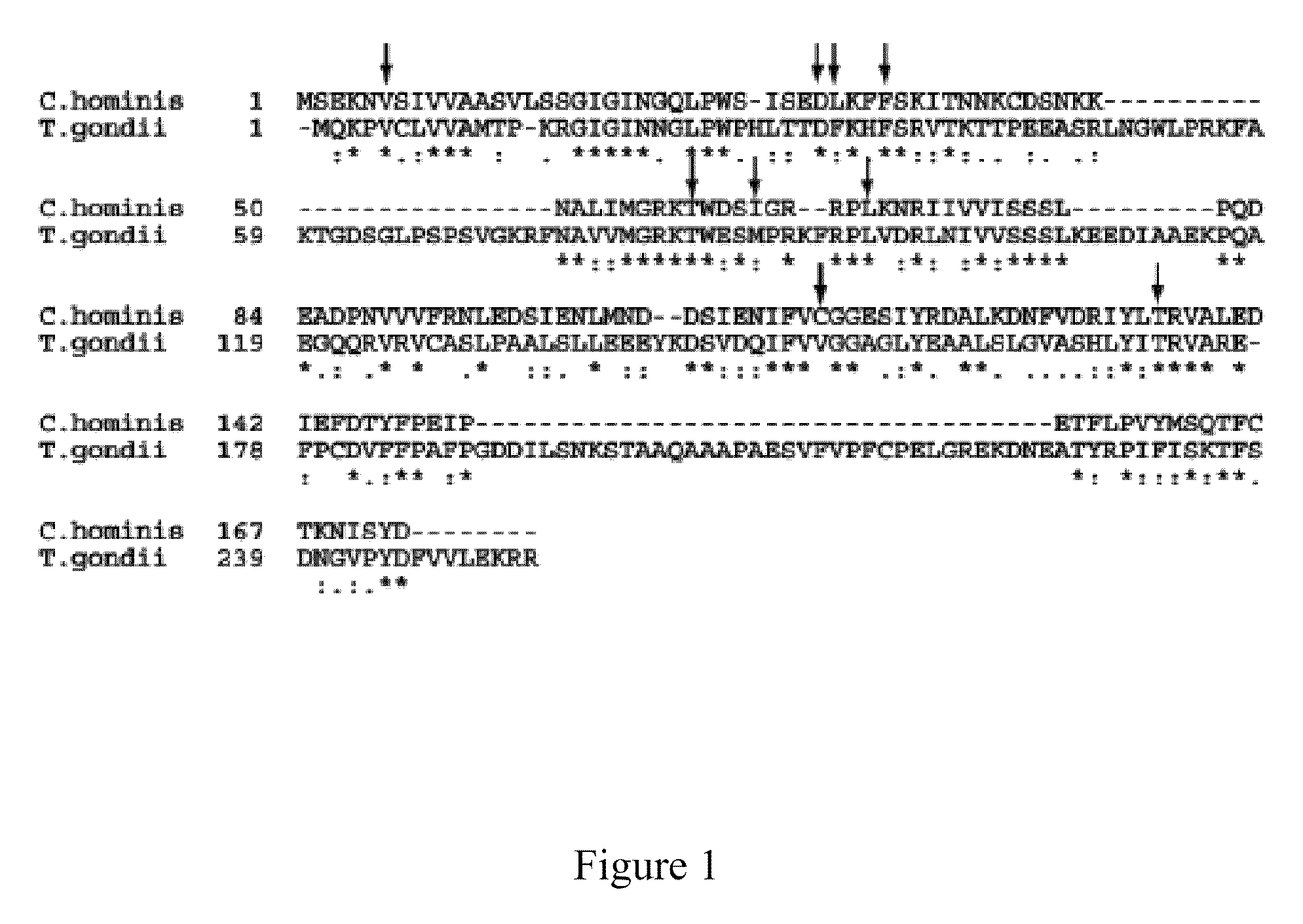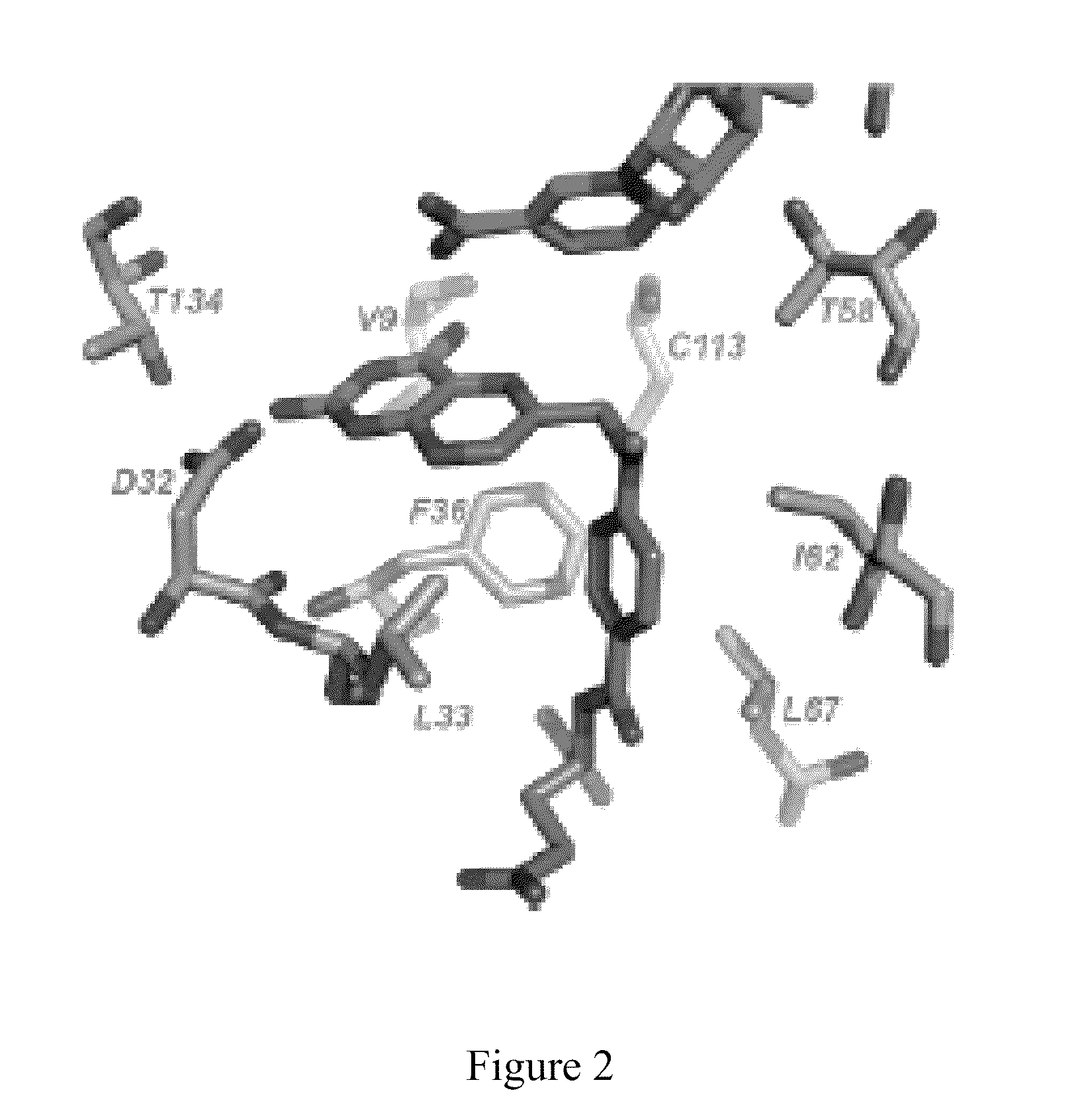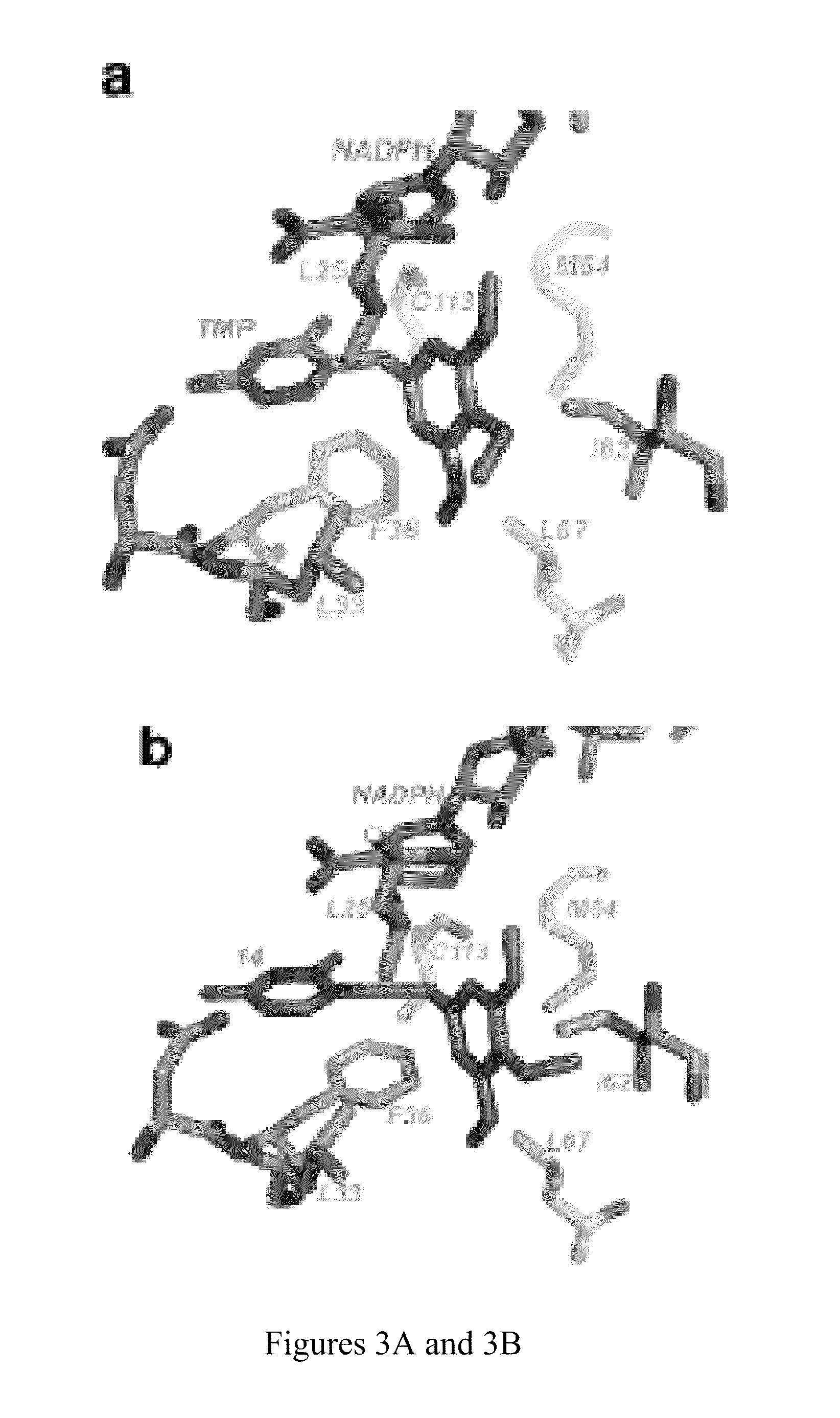Inhibitors of dihydrofolate reductase with antibacterial antiprotozoal, antifungal and anticancer properties
a dihydrofolate reductase and antiprotozoal technology, applied in the direction of antibacterial agents, drug compositions, antiparasitic agents, etc., can solve the problems of i>b. cereus/i>infection, difficult to find effective cryptosporidiosis treatment, and high cost, so as to achieve effective antifungal and antibacterial agents, the effect of reducing the potency
- Summary
- Abstract
- Description
- Claims
- Application Information
AI Technical Summary
Benefits of technology
Problems solved by technology
Method used
Image
Examples
example 1
Enzyme Expression, Purification, and Assays
[0176]ChDHFR: ChDHFR-TS was expressed in E. coli and purified using a methotrexate agarose column (Sigma).
[0177]hDHFR: The gene for hDHFR was amplified using PCR from cDNA obtained from ATCC. The gene was inserted in a pET41 vector with a C-terminal histidine tag for affinity chromatography. The resulting construct was verified by sequencing. The hDHFR protein was expressed in E. coli and purified using a nickel affinity column.
[0178]TgDHFR: DHFR cloned from T. gondii DHFR-TS was determined to be insoluble after refolding at relatively low protein concentrations (>1 mg / mL). The presence of an unstructured loop region (residues 43-70) that is not present in other DHFR proteins was predicted to render the protein insoluble. These residues were removed, leaving a five residue loop region characteristic of several other species of DHFR. The removal of this unstructured loop region yielded a soluble preparation of TgDHFR at concentrations in exc...
example 2
[0186]Chemistry, Modeling, and Biological Evaluation
Structural Analysis of DHFR from C. hominis and T. gondii.
[0187]The crystal structure of ChDHFR with different ligands has been previously reported, however, to date, there has been no experimentally determined structure of TgDHFR. Homology models of TgDHFR have been created based on the closely related structure of DHFR from Mus musculus (PDB ID: 1U7014). The TgDHFR model was minimized, and a Ramachandran analysis showed good morphology conservation such that the backbone geometry fell outside allowed regions for only six residues in loop regions. The model was further validated by docking eleven inhibitors with determined IC50 values into the active site and achieving a 50.2% correlation with the measured inhibition constants.
[0188]Superpositions of the crystal structure of ChDHFR and the homology model of TgDHFR show that the two enzymes are very similar, both in overall fold and in the identity and arrangement of many active s...
example 3
Design and Synthesis of Extended TMP Analogues
[0190]In order to test the hypothesis that extending the distance between the diaminopyrimidine and phenyl rings of TMP would achieve greater potency against ChDHFR and TgDHFR, the use of a two-carbon linker was explored in place of the single methylene bridge found in TMP. The synthesis of several 5-ethynylpyrimidine derivatives with non-benzyl moieties has been previously reported and these compounds appeared to inhibit T. gondii and two species of fungal DHFR. TMP derivatives containing saturated aliphatic, cis and trans-olefinic, or acetylenic linkers were docked into the crystal structure of ChDHFR, chosen because it was determined from experimental data. TMP analogues with rigid olefinic and acetylenic linkers allowed the diaminopyrimidine to dock into the proper orientation but these linkers prevented the trimethoxyphenyl ring from occupying the biologically relevant hydrophobic pocket. However, the high degree of flexibility allo...
PUM
| Property | Measurement | Unit |
|---|---|---|
| molecular weight | aaaaa | aaaaa |
| molecular weight | aaaaa | aaaaa |
| concentrations | aaaaa | aaaaa |
Abstract
Description
Claims
Application Information
 Login to View More
Login to View More - R&D
- Intellectual Property
- Life Sciences
- Materials
- Tech Scout
- Unparalleled Data Quality
- Higher Quality Content
- 60% Fewer Hallucinations
Browse by: Latest US Patents, China's latest patents, Technical Efficacy Thesaurus, Application Domain, Technology Topic, Popular Technical Reports.
© 2025 PatSnap. All rights reserved.Legal|Privacy policy|Modern Slavery Act Transparency Statement|Sitemap|About US| Contact US: help@patsnap.com



